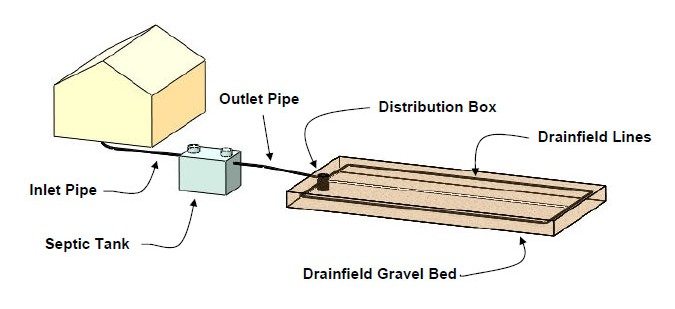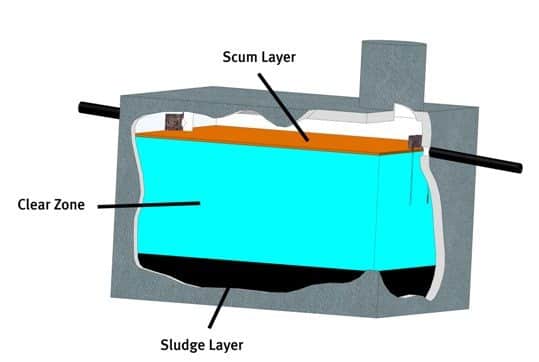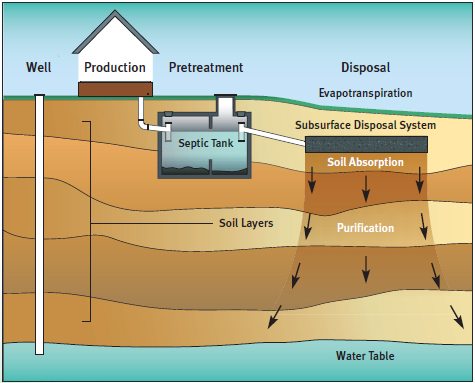Septic systems are one of the most expensive assets most homeowners own. But, because it lies beneath the ground, most homeowners have no idea on how septic systems work. Understanding the processes and components in a septic system will help a homeowner prevent septic problems and make intelligent decisions when problems arise.

Components of a septic system with a gravity fed drainfield
Almost all septic systems have a septic system tank. The septic tank is the most important component in the septic system for processing sewage. The septic tank is designed to hold organic waste for a period of time so that it can be broken down into simpler solids and gas before it flows into the absorption component. The breakdown of the organic waste is performed by bacteria. From a layman’s perspective, the bacterial environment in a septic tank can be classified as either aerobic or anaerobic. By far, the most common environment is anaerobic or without oxygen. The more efficient and robust environment is aerobic or containing oxygen.

Layers or zones within a septic tank
Within the septic tank, three zones emerge:
– the sludge layer, where heavier organic solids settle out.
– the clear zone, where the water contains the least amount of dissolved organic solids.
– the scum layer, where the less dense material (oils, fats, etc.) collect.
As new sewage enters the tank through the inlet pipe, it displaces clear zone liquid, which exits the tank through the outlet pipe. This processed sewage, or effluent, then flows into the the absorption component. The purpose of the absorption component (also known as drainfield, mound, drywell, cesspool and other names) is to distribute the effluent over a large area so that the water can be slowly absorbed back into the ground. Any remaining organic material precipitates out and collects at the edges of the absorption component. Over time in the anaerobic systems, this condition worsens and results in septic system failure.

Diagram of a functional septic system
To summarize, the septic tank does the bulk of the work in a septic system but the absorption component is the component that most often causes system failure. It is, therefore, very important to implement septic system best practices regardless if your system utilizes aerobic or anaerobic bacteria. Best practices will extend the life of your system and protect the bacteria in the septic tank, giving them the best opportunity to break down waste.











